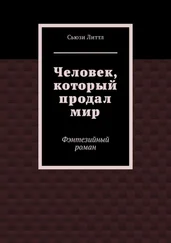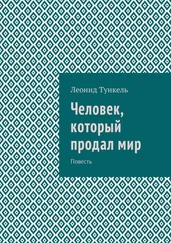For Yelu Chu Cai see Rachewiltz, In the Service p. 144.
For Yelu Chu Cai see Rachewiltz, In the Service p. 144.
Waley, Travels of an Alchemist pp. 94–98.
Bretschneider, Mediaeval Researches I pp. 82–86.
Waley, Travels of an Alchemist pp. 98–100.
As later revealed in the debates held at the Mongol court in the 1250s between Friar William of Rubruck and the priests of rival religions (Jackson & Morgan, Rubruck pp. 225–233). Cf Richard Fox Young, 'Deus Unus or Dei Plures Sunt? The Function of Inclusiveness in the Buddhist Defense of Mongol Folk Religion against William of Rubruck,' Journal of Ecumenical Studies 26 (1989) pp. 100–137.
Waley, Travels of an Alchemist p. 102.
Waley, Travels of an Alchemist pp. 103–16; Bretschneider, Mediaeval Researches I pp. 87–93.
Waley, Travels of an Alchemist pp. 111–112; Bretschneider, Mediaeval Researches I pp. 94–96.
Tao-chung Yao, 'Chi'u Ch'u-chi and Chinggis Khan,' Harvard Journal of Asiatic Studies 46 (1986) pp. 201–219; Ratchnevsky, Genghis Khan, pp. 134–135, 149–150, 238.
This might be described as an ur-Kantian notion, as Kant described his noumenon as an object of thought but not of knowledge.
See Chavannes & Pelliot, Un traite manicheen p. 289.
Reid, The Tao of Health p. 26; Welch, Taoism p. 154.
Waley, Travels of an Alchemist pp. 24, 118. As for the precious gift of 'life', scholars are divided about whether Chang meant Genghis's or, as a Buddhist, all life including the boar's. An educated guess might be that he was being deliberately ambiguous.
Очевидно, имеется в виду туранский (каспийский) тигр, который обитал на всем пространстве от предгорий Тянь-Шаня до Кавказа. — Прим. пер .
JB II p. 613.
Waley, Travels of an Alchemist p. 115.
Waley, Travels of an Alchemist pp. 115–116.
Bretschneider, Mediaeval Researches I pp. 97–108.
Chavannes, 'Inscriptions et pieces,' loc. cit. p. 372.
Waley, Travels of an Alchemist pp. 119–133.
Waley, Travels of an Alchemist pp. 135–136.
Waley, Travels of an Alchemist p. 150.
Rachewiltz, In the Service p. 145.
Rachewiltz, In the Service p. 198.
Paul Demieville, 'La situation religieuse en Chine au temps de Marco Polo,' Oriente Poliano (Rome 1957) рр. 193–236 (at pp. 200–201); Rachewiltz, 'The Hsi-Yu-lu by Yeh-Lii Ch'u Ts'ai,' Monumenta Serica 21 (1962) pp. 1–128 (at pp. 25–37).
«Тот, кто целует, и тот, кто подставляет щеку» ( фр .).
RT II p. 258; Barthold, Four Studies I pp. 41, 64; Grousset, Empire p. 244.
JR II pp. 1083–1084.
Martin, Rise pp. 283–284.
JR II p. 1084.
d'Ohsson, Histoire I pp. 322–323.
SHO p. 251; SHR pp. 192–193; Barthold, Turkestan p. 455; d'Ohsson, Histoire I p. 233.
SHO p. 260; SHR p. 198.
A. P. Martinez, 'The Use of Mint-Output Data in Historical Research on the Western Appanages,' in Sinor, Aspects pp. 87–126; Atwood, Encyclopedia p. 362.
Of the many examples of this see, Eleanor Sims, 'Trade and Travel: Markets and Caravanserais,' in Michell, Architecture pp. 80–111; Verschuer, Across the Perilous Sea.
JB I p. 96; Yule, Cathay II pp. 287–288; Bretschneider, Mediaeval Researches I p. 283; Barthold, Turkestan pp. 456–457.
Riasanovsky, Fundamental Principles p. 88; Fletcher, 'The Mongols,' loc. cit. p. 50.
For the improved Mongol diet see Paul D. Buell, 'Pleasing the palate of the Qan: changing foodways of the imperial Mongols,' Mongolian Studies 13 (1990) pp. 69–73; Buell, 'Mongol Empire and Turkicisation: the evidence of food and foodways,' in Amitai-Preiss & Morgan, eds, Mongol Empire op. cit. pp. 200–223; Lane, Daily Life pp. 173–178.
Hildinger, Story of the Mongols pp. 17, 51.
Lane, Daily Life pp. 152–153.
John Smith, 'Dietary Decadence and Dynastic Decline in the Mongol Empire,' Journal of Asian Studies 34 (2000) pp. 35–52.
W Barthold, 'The Burial Rites of the Turks and Mongols,' Central Asiatic Journal 12 (1968) pp. 195–227; Boyle, 'Kirakos,' p. 207; J. A. Boyle, 'A Form of Horse Sacrifice among the Thirteenth and Fourteenth-Century Mongols,' Central Asiatic Journal 10 (1965) pp. 145–150; Pelliot, Recherches p. 99.
Skelton, Marston & Painter, Vinland Map pp. 92–93.
de Windt, From Pekin to Calais.
H. Haslund, Mongol Journey pp. 172–173. According to experts, the word kodagalaku in Mongolian means the depositing of a corpse on the steppes (Lessing, Mongolian-English Dictionary p. 477). For the connections of this practice with Mongol religion in general see Bonnefoy, Asian Mythologies pp. 314–339; Heissig, Synkretismus.
JR II p. 1102; d'Ohsson, Histoire I p. 447.
Barthold, Turkestan p. 458.
JB I p. 118.
Gumilev, Imaginary Kingdom p. 323; Pelliot, Horde d'Or pp. 10–27.
JR II p. 1103.
Имеется в виду английский философ и теоретик общественного договора («Левиафан») Томас Гоббс. — Прим. пер .
The words are by Thomas Hobbes, Leviathan Part 1, Chapter 17.
JR II p. 1103; Barthold, Turkestan p. 495.
Morgan, The Mongols pp. 64–65.
Shensong — у автора, ранее — Shen-Tsung (глава 10). Ань-цюань совершил переворот в 1206 году и сверг императора Чунь-ю, который прежде удостоил его титула Чжэньицзюнь (князь области Чжэньи). В 1211 году Ань-цюань вынужденно отрекся от трона, и его место занял Цзюнь-сян. Императоры Си Ся этого периода: Чунь-ю (1193–1206); Ань-цюань (1206–1211): Цзунь-сян (1211–1223); Дэ-ван (1223–1226); Наньпин ван-Сянь (1226–1227). Кычанов Е. И. Очерк истории тангутского государства. М.: Наука, 1968. — Прим. пер .
Читать дальше
Конец ознакомительного отрывка
Купить книгу

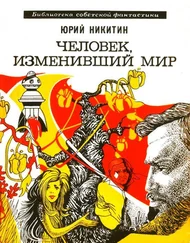

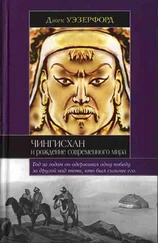
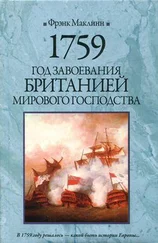

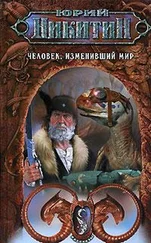
![Ксения Чепикова - Человек, научивший мир читать [История Великой информационной революции]](/books/388624/kseniya-chepikova-chelovek-nauchivshij-mir-chitat-ist-thumb.webp)
